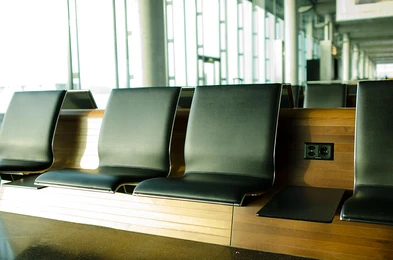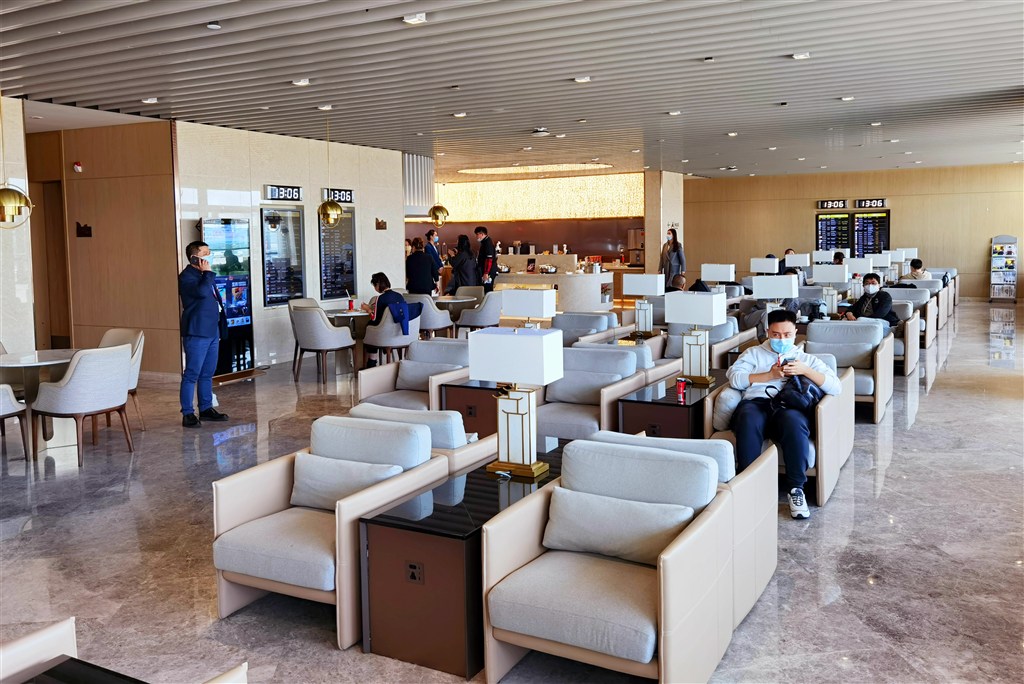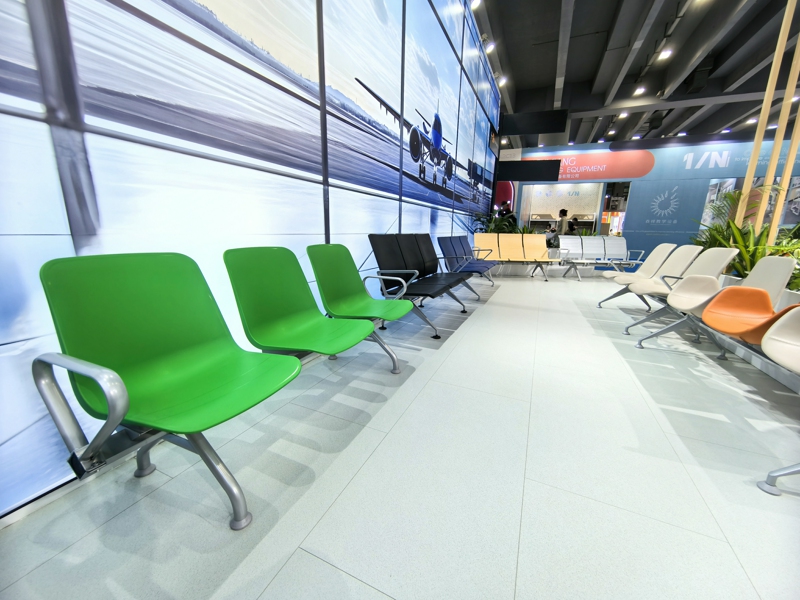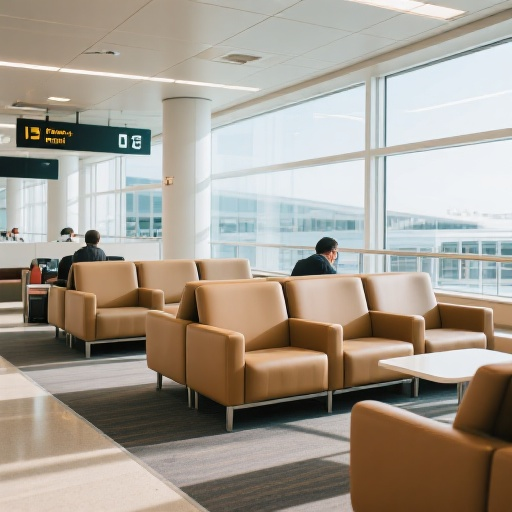A Comprehensive Guide to Airport Seating Areas: Designing for Passenger Comfort and Operational Efficiency
Discover the Airport Seating Areas Guide by Leadsun. Explore comfortable, durable seating solutions designed for busy terminals, enhancing passenger experience with style and functionality. Optimize your airport space with Leadsun’s expert insights on modern seating design.
- Introduction:
- 1. The Foundation: General Waiting Areas
- 2. Elevated Comfort: Priority Lounges
- 3. The Transit Hub: Transit Lounges/Transfer Areas
- 4. Family-Friendly Spaces: Family Areas
- 5. Seeking Serenity: Quiet Zones/Relaxation Areas
- 6. The Mobile Office: Business Areas/Workstations
- 7. Resting Overnight: Overnight/Long Layover Areas
- Conclusion:
Introduction:
Airports are dynamic environments, bustling with millions of passengers each year, all with unique needs and varying dwell times. Beyond the essential functions of check-in, security, and boarding, the passenger experience is profoundly shaped by the time spent waiting. At the heart of this experience lies seating—not just a place to sit, but a critical element influencing passenger comfort, flow, and overall terminal efficiency.
For airport operators, designers, and facility managers, understanding the diverse requirements of different terminal zones is key to selecting seating solutions that are not only durable and aesthetically pleasing but also perfectly suited to their specific purpose. This guide explores the primary types of seating areas found in modern airports worldwide, highlighting the functional and design considerations for each.

1. The Foundation: General Waiting Areas
These are the most ubiquitous seating zones within an airport, typically located near check-in counters, security exits, and, most importantly, around boarding gates. They are designed to accommodate high volumes of passengers for varying periods, from a quick rest before boarding to longer waits during delays.
- Purpose: High-capacity seating for general passenger flow and pre-boarding waiting.
- Passenger Activity: Waiting, reading, using devices, observing flight information.
- Seating Considerations:
- Durability: Must withstand constant heavy use and traffic.
- Capacity: Designed to maximize seating density within available space, often using beam seating systems.
- Maintenance: Easy to clean and maintain.
- Integration: Increasing need for integrated power outlets (USB and standard) for device charging.
- Modularity: Ability to configure layouts to fit different gate area shapes and sizes.
- Why it Matters: Efficient general seating is crucial for managing crowds and ensuring a basic level of comfort for the majority of travelers.

2. Elevated Comfort: Priority Lounges
Exclusive spaces for premium travelers (first/business class, elite status holders, and lounge pass holders), priority lounges offer a distinct upgrade in comfort, privacy, and amenities compared to general areas.
- Purpose: Provide a premium, relaxing, and productive environment for select passengers.
- Passenger Activity: Relaxing, working, dining, socializing, showering.
- Seating Considerations:
- Comfort: Plush, ergonomic seating is paramount—comfortable armchairs, sofas, and often individual, more private seating options.
- Variety: A mix of seating types to support different activities (dining, working, lounging).
- Aesthetics: High-quality materials and sophisticated design reflecting the lounge's brand and luxury positioning.
- Integration: Seamless integration of power outlets, small tables, and ambient lighting.
- Privacy: Layouts often incorporate dividers or create semi-private nooks.
- Why it Matters: Lounge seating directly contributes to the perceived value of premium services and enhances brand loyalty.

3. The Transit Hub: Transit Lounges/Transfer Areas
Located in international transit zones, these areas cater specifically to passengers connecting between flights, often involving significant layover times.
- Purpose: Facilitate comfortable and efficient transfers for passengers with layovers.
- Passenger Activity: Resting, working, eating, checking flight status, and sometimes sleeping.
- Seating Considerations:
- Versatility: Needs to support both short waits and longer layovers. A mix of standard seating, more relaxed chairs, and potentially recliners or rest pods is beneficial.
- Information Access: Seating should allow easy viewing of flight information displays.
- Power Access: High demand for charging stations.
- Durability: Still requires robustness due to continuous passenger flow.
- Why it Matters: Well-designed transit seating improves the transfer experience, crucial for airports serving as major international hubs.

4. Family-Friendly Spaces: Family Areas
Dedicated zones designed with the needs of travelers with children in mind, offering a more relaxed and accommodating environment.
- Purpose: Provide a comfortable and engaging space for families traveling with children.
- Passenger Activity: Parents resting, children playing or sitting with family.
- Seating Considerations:
- Space: Layouts should accommodate strollers and provide slightly more personal space.
- Durability & Safety: Robust construction, easy-to-clean materials, and consideration for child safety (e.g., rounded edges).
- Integration: Often located near play areas or family restrooms. Seating itself might be colorful or modular to appeal to families.
- Comfort: Comfortable enough for parents to rest while supervising children.
- Why it Matters: Family areas enhance the airport experience for a significant passenger demographic, reducing stress for families and potentially improving overall terminal atmosphere.

-
5. Seeking Serenity: Quiet Zones/Relaxation Areas
Responding to the need for tranquility amidst the airport's energy, these areas offer a retreat for passengers seeking peace, rest, or a space for reflection.
- Purpose: Provide a calm, low-stimulation environment for rest, meditation, or quiet work.
- Passenger Activity: Sleeping, reading, meditating, quiet work.
- Seating Considerations:
- Comfort & Recline: Comfortable seating, often with reclining capabilities or dedicated rest chairs/pods.
- Privacy: Layouts that minimize visual and auditory disturbances, potentially using partitions or facing away from traffic.
- Ambiance: Design should complement a quiet atmosphere (e.g., muted colors, soft lighting).
- Durability: While traffic might be lower than in general areas, comfort and ease of cleaning remain important.
- Why it Matters: Quiet zones cater to passenger well-being, offering a valuable service for those overwhelmed by the airport environment or needing dedicated rest.

-
6. The Mobile Office: Business Areas/Workstations
Tailored for business travelers and anyone needing to work efficiently while waiting, these areas provide a functional space equipped for productivity.
- Purpose: Offer a convenient and equipped space for passengers to work.
- Passenger Activity: Using laptops, making calls, holding informal meetings, and preparing documents.
- Seating Considerations:
- Integration with Desks/Tables: Seating paired with appropriate work surfaces.
- Power & Connectivity: Abundant, easily accessible power outlets and reliable high-speed internet access are essential.
- Ergonomics: Seating should be comfortable enough for extended periods of work.
- Lighting: Adequate task lighting.
- Why it Matters: Business areas support the needs of productive travelers, enhancing the airport's appeal as a functional transit point.

-
7. Resting Overnight: Overnight/Long Layover Areas
For passengers facing long layovers or unexpected overnight stays, some airports provide dedicated areas designed for more substantial rest or sleep.
- Purpose: Offer facilities for passengers needing extended rest or sleep within the terminal.
- Passenger Activity: Sleeping, deep rest, extended waiting.
- Seating Considerations:
- Recline/Sleep Function: Features like fully reclining chairs, sleep pods, or even simple bed-like structures.
- Privacy & Security: Design should offer a degree of privacy and ensure passenger safety.
- Durability & Hygiene: Must be easy to clean and maintain to ensure hygiene despite high turnover.
- Why it Matters: Providing comfortable overnight options significantly improves the experience for passengers facing challenging travel disruptions or schedules.
-
Conclusion:
The modern airport terminal is a complex ecosystem, and seating is a fundamental component that must be carefully considered for each distinct zone. From the high-traffic demands of general waiting areas to the specific needs of lounges, family zones, and rest areas, the right seating solution is critical for optimizing passenger flow, enhancing comfort, and contributing to the overall operational efficiency and aesthetic of the airport.
Selecting seating that balances durability, functionality, comfort, and design is an investment in the passenger experience and the airport's long-term success. Understanding the unique requirements of each area is the first step in creating a terminal environment that serves the diverse needs of global travelers effectively.
Discover how our seating can enhance your airport's passenger experience.

Waiting Area Seating: 5 Major Trends & How to Choose the Right Solution

Application of Aluminum Alloy Die Casting in Airport Seating

Public Space Seating Selection Guide: Materials, Structures, and Applications

Premium Airport Seating Solutions: Comfort, Durability, and Design Excellence

Common Questions About Waiting Chairs For Hospitals
One Stop Airport Terminal Seating
Can you provide personalized seat customization?
We support comprehensive customization, including seat styles, functional modules (like charging ports, cup holders, etc.), color schemes, and even integrating airport brand elements to showcase a unique style.
How do you ensure seat installation doesn't disrupt airport operations?
We’ll develop a detailed installation plan, giving priority to non-peak hours for construction. We also use a modular installation approach to minimize any impact on airport operations.
FAQs
How can I request a quote for a seating project?
You can easily request a quote by contacting our sales team through our website or by email. Provide details about your project, including the quantity and specific requirements, and we will get back to you with a tailored quote.
Do you offer installation services for your seating solutions?
Yes, we offer professional installation services to ensure that the seating is properly installed and meets all safety standards. Our team is experienced in handling both large and small-scale installations.
What maintenance is required for your seating solutions?
The maintenance required depends on the material and location of the seating. Generally, regular cleaning and periodic inspections are recommended. We provide maintenance guidelines with each product to ensure long-term durability.

LS-550 Comfortable and Durable Waiting Chair | Customizable Waiting Chair Supplier Leadsun Seating
The LS-550 waiting chair from Leadsun offers superior comfort and durability for any public place. Customize your seating with Leadsun, a leading customizable waiting chair supplier. Ideal for high-traffic areas, the LS-550 ensures lasting performance and style.

LS-551 Ergonomic Modular Waiting Chairs | Commercial Seating Solutions by Leadsun Seating

LS-529Y Ergonomic Waiting Chairs | High-Density PU Seating Solutions by Leadsun Seating

LS-529M Ergonomic Waiting Chairs | Wooden Waiting Chairs Solutions by Leadsun Seating
Ready for your public seating project?
We specialize in providing high-quality, customizable seating solutions for public spaces, and we are excited to assist you with your project.
Our professional team will quickly answer your questions and provide customized solutions to ensure you have a worry-free experience.


 Scan QR Code
Scan QR Code